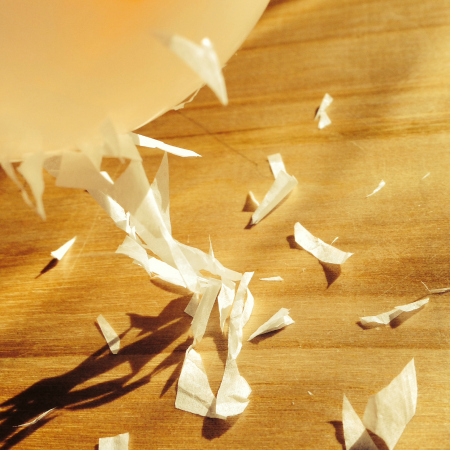Don't Miss Your Best Chance to Study Electrostatics
By Christy McGuire, ThrivingSTEM.com
For those of us who live in the United States it is winter time right now. Most people think about snow as the main scientific aspect of winter. Some may even think about the increase in darkness. However, for most of us, winter also means your best chance to do electrostatics and have your demonstration actually work.

Electrostatics are all those cool demonstrations where you remove the electrons from one object and then the other object wants to stick to it. You can then send the electrons back, creating mini-lightning. Electrostatics are also responsible for the phenomenon of hat hair.
I am sure some of you know the joke about biology stinking, chemistry exploding, and physics failing. Electrostatic experiments are super cool, but they can also be particularly prone to failure. The main culprit is usually extra humidity. Extra water molecules hanging around will ruin your experiment because those polar water molecules attract extra electrons to hang out with them instead of going to the object of your choice. That means that the potential difference that should have been created by the electron imbalance may be too small to do anything impressive in your demonstration.
The amount of water that the air can carry decreases with temperature. Colder air, is often dryer than it would be if it were warm. Hot air can also be dry, but cold air has to be dry. That’s why your electrostatic experiments will be at their best now, in the winter. Of course, if you live in Florida, that may be a bit different, but at least it will not be raining every day, so I would still pull out your toys and give them a try if I were you!
Ready but not sure quite what to do?
Here are some ideas. You will notice that Van der Graaf generators are conspicuously missing. I do not have access to one right now, but if you do and you have a great post about, please link it up in the comments. Most of these are ideas are simple enough that you could have each student do their own. You could then assign each student to teach a family member how the demonstration works and why.
Ideas for electrostatic demonstrations
Attraction
Steve Spangler uses a charge of static electricity to make objects float with Floating Static Bands.
The Rebecca at the Kids Activities Blog lists four different demonstrations that can be done with balloons.
You could add some fun with paper frogs like they did at Science Sparks or a Snake, Kids Activities Blog.
Schooling a Monkey recommends using a comb.
This electroscope from education.com could be calibrated to allow your students to do some experimentation and numerical analysis.
I think this butterfly from I Heart Crafty Things is my favorite though!
Electrostatic Discharge (AKA “lightning”)
This demonstration from Raising Life Long Learners is really simple to prepare.
Learn Play Imagine has another demonstration that would probably be pretty impressive and save you the need to find a dark room, or to take your class into one.
Happy Experimenting!
Christy McGuire is a trained physics teacher who loves developing new ways for students to engage with science. While taking a break from the high school classroom, Christy rediscovered that young children are tons of fun, and can learn powerful science and math too. Now she is attempting to cross the excitement of early childhood style learning with serious STEM study to benefit students on both ends of the learning process. Find activities and reflections on STEM learning on her blog: www.ThrivingSTEM.com.




Leave a Reply
Want to join the discussion?Feel free to contribute!